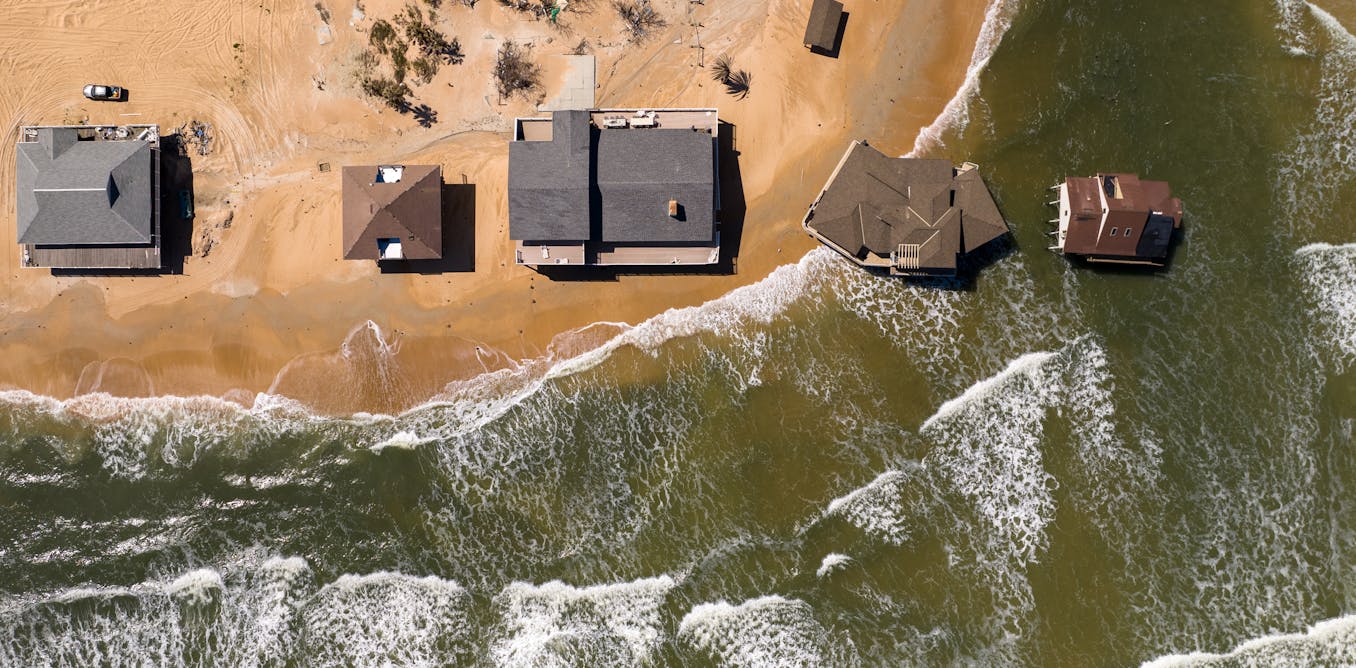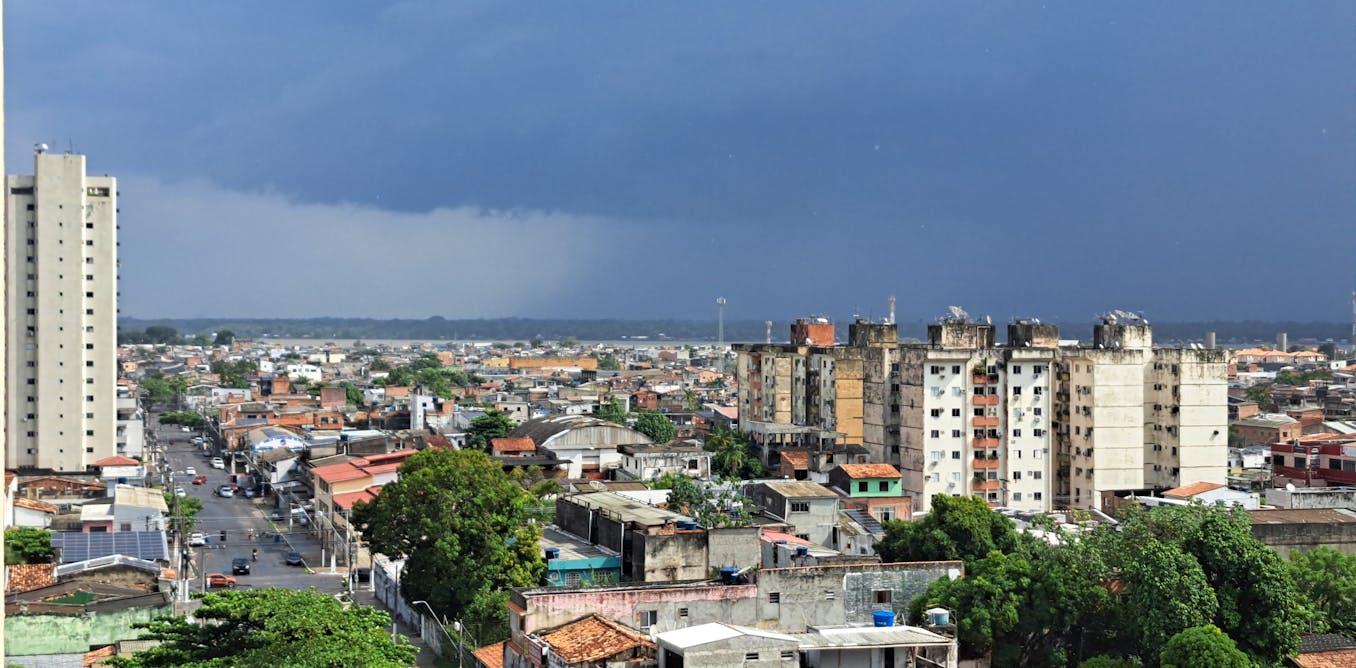With its 30-show Dead Forever residency at Las Vegas’ Sphere, Dead & Company has written another entry in the Grateful Dead’s 60-year legacy of live music reinvention. Beginning in late May, the band – comprised of founding Grateful Dead members Bob Weir and Mickey Hart, alongside John Mayer, Oteil Burbridge, Jeff Chimenti and Jay Lane – has delivered a series of three-night runs, each without song repeats and featuring a rotating carousel of visuals ranging from diaristic photo collages to abstract technicolor animations.
For Dead Forever, which wraps this weekend with three shows Aug. 8-10, the jam band turned to Treatment Studio, the agency that has handled creative for Dead & Company and Mayer solo tours alike. Co-founded by Willie Williams and Sam Pattinson in 2009, Treatment had another critical qualification: It also spearheaded U2:UV Achtung Baby Live, the 40-date residency that opened the venue last fall.
“It is very sweet how so many of the principles of the U2 show have become kind of boilerplate for all shows in there, because that’s what works,” says Williams, who as U2’s creative director has been responsible for the band’s tours dating back to the ’80s, including its groundbreaking “Zoo TV” outing in the early ’90s. (In fact, Treatment’s connection to Sphere predates even U2’s residency: When the venue was still just a concept, the agency created a promotional video about it to circulate among touring professionals, and Treatment consulted about how touring shows might adapt themselves for Sphere.)
But even given its familiarity with the cutting-edge venue and rapport with the third artist to perform there (Treatment wasn’t involved in April’s four-show Phish run between U2 and Dead & Company), Dead Forever still proved daunting. “They play different versions of songs, different durations, the setlist is always different, and they wanted the visual aspect of the show to vary as well,” says Pattinson, who served as Dead Forever creative director alongside Mayer. Deadheads, he adds, will see multiple shows, so the band “wanted to see variety between the three, so there was a new offering every night.”
Treatment began ideating Dead Forever with Dead & Company last November, and according to Pattinson, Mayer took the creative reins. “The whole concept came from John,” he explains of the show, which begins and ends at the Dead’s late-’60s home on 710 Ashbury Street in San Francisco and, in between, transports audiences to distant psychedelic realms as well as historic venues from the band’s past. “The show you see today is the show that he outlined in November; it was a very strong concept.”
Such a strong concept, it turns out, that Dead Forever was still adding to its robust stable of visuals –which already included core pieces like the San Francisco liftoff and touchdown, created by famed Bay Area agency Industrial Light & Magic, and a pastoral, paint-by-numbers world designed by London company Art & Graft – as late in the residency as its penultimate weekend.
Treatment isn’t involved in Sphere’s two upcoming music bookings, Eagles (starting Sept. 20) and Anyma (starting Dec. 27), and the firm has its hands full with other projects far from Sin City; when Billboard connected with Williams and Pattinson, the latter was in Munich, putting the final touches on Adele in Munich just hours before the singer’s German residency kicked off. But, Pattinson says, Treatment would “absolutely” like to return to the space in the future. “You really want to work with a band that, like U2 or Dead & Co., really sort of begins to understand the space, or are open to understanding and learning about the space and what that means for them and their performance,” he says. “Someone who’s got a lot of time to put into it.”

What was your reaction when U2 first approached you about its Sphere residency?
Willie Williams: Many things about it, initially, I was either suspicious of or wasn’t very excited about. Bono particularly was leading the charge; we talk a lot and part of his point was, “Look, what else are we going to do? Are we gonna go out and reinvent stadium rock again?” When you’ve got not only a new venue, but a completely new kind of venue, surely, if you’re going to try and put music in there, the people that need to do it are the people that have been blazing that trail for 30 years. The journey was extraordinarily uphill. Because, of course, the building didn’t exist when we were conceiving the show. So not only did we have to conceive the show, we had to conceive the building as well – I had to imagine what the building would be like. It was a long journey, but we had time. We’ll be the only people who had the luxury of having several months in the building prior to the first show. But we really were making it up as we went along.
Based on your experience with U2, what are the guiding principles for a successful Sphere show?
Williams: The big takeaway, for me, was understanding that Sphere is a three-dimensional audio-visual space, and what works in there are the kind of visual things you would make for VR rather than for cinema. It sounds so stupid, but the fact that there are no corners really was a revelation. And for me, when I started playing with very simple graphic things, I realized that your brain has no sense of where the visual plane is. And not only are there no corners, but we could introduce virtual corners and shapes of our own and your brain absolutely buys it – I was really shocked at the degree to which your brain buys the environment that you’re in.

Sam, in a nutshell, how would you describe the concept that Mayer brought to you?
Sam Pattinson: John’s overall concept was a perfect framework for the culture of the band and their history. And it was this idea of “We start in a sort of historically relevant place, and then we could start this journey. And we use a series of portals that transport to different worlds and environments and scenes and animations and bits and bobs.” It’s a very flexible structure that we could change. Because every show, we get the setlist the night before, and we have to rebuild the show to the new setlist. So obviously it needs to be versatile – which it is.
What challenges did switching the show up night to night present? And did you see that as an opportunity?
Pattinson: Absolutely – it was great. I mean, it was added work and stress at times. The initial commission from the band was they wanted us to produce 30% to 40% more content than we needed for a show; obviously, the shows are three hours long. To date, we’ve made almost six hours worth of content. We had lots of choices, and very strong pieces within that. So actually, it wasn’t difficult to refresh the show every night – it was quite good fun.
The show begins and ends in San Francisco, but in between goes to both the cosmos and important venues from the Dead’s history, like Radio City Music Hall and Cornell University’s Barton Hall. Was balancing those elements difficult?
Pattinson: We had to nod to the big moments in their career and venues and so on, and the characters and their graphics, and all those things that the fans are familiar with. But [the band has] always been open-minded and they’ve always tried new stuff. That was very much the case in Vegas. They were open to content that we thought probably wasn’t right for them [and] was probably for more of a contemporary band, perhaps, or a younger band. So actually, combining some of their historic content with the more abstract and more contemporary stuff was quite an easy balance to strike.

What advice would you have for an artist considering playing Sphere?
Williams: To have a lot more time and a lot more money than you could possibly imagine you’d need. My takeaway is imagine you’re making material for VR but without a headset. That’s how you get the real magic out of the space, rather than it just being big, big films. I’ve had artists ask, “How many nights would I have to do at the Sphere to make it break even?” and “What sort of budget would I have to have?” Those questions just can’t be answered really, because there are just so many other factors involved. [But] it would have to be a residency and you’d have to look at the whole thing in a very overall sense.
Even beyond Sphere, stadium and arena shows are becoming more complex and immersive. Do you think that’s becoming more important for fans as they choose which artists to see in concert?
Williams: I think the only thing the audience cares about is making an emotional connection with the performer. And if the technology can assist that, then great. And if not, I don’t think they care at all. The intrusiveness of big visuals is a really, really delicate balance. I’ve always admired U2 for having the confidence to understand that it’s OK to let go of being the center of attention for a moment – something very big and visual is going to happen, and everyone’s going to look at it. And it cost a fortune, so they better look at it! And at that moment, they’re not going to be looking at you, but that’s OK, because they’ll get back to you. It’s a brave performer that has that much confidence.

The post “Creative Duo Behind Dead & Company and U2’s Sphere Residencies on Why Vegas Venue Demands a ‘Brave Performer’” by Eric Renner Brown was published on 08/08/2024 by www.billboard.com







































Leave a Reply